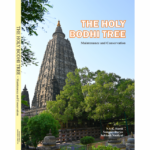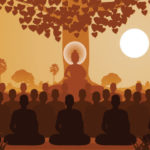
Buddhist Places of Interest in Delhi

Compiled by Kamal Barua
Buddha Vihara or Buddhist temples has been continuously functioning as the most venerable center for Buddhism in the Capital of India. Thousands of devotees irrespective of faith and identification pay frequent visits to these Viharas and monasteries to pay homage to the Buddha and His compassionate message of peace and nonviolence.
Some of the more well- known places of Buddhist importance are listed below :
National Museum
The focal point of this gallery is the display of the relics believed to be of Lord Buddha. In 1898, an excavation was carried out on a mound at Piprahwa, in Uttar Pradesh, which yielded caskets with fragments of bone, along with ornaments, figures and precious stones. The inscription on a casket speaks of the relics of Lord Buddha. The Archaeological Survey of India conducted further excavations at the site from 1971 to 1977, resulting in the discovery of two more caskets in soapstone, containing more sacred bone relics. The site has been identified with ancient Kapilavastu, the home town of Buddha Sakyamuni. These objects are of great reverence to Buddhist pilgrims, and the Museum gets hundreds of visitors of Buddhist faith from all over the world who come to this room to pay homage and venerate the relics.
(http://www.nationalmuseumindia.gov.in/departments-archaeology.asp?lk=dp2#Buddhist)
The Buddhist Art Gallery was set up in 1990 as the first thematic gallery of the museum. All the three major schools of Buddhism – Hinayana, Mahayana and Vajrayana – are represented here. The gallery presents a large number of images of Buddhist deities. Important Buddhist sites like Sarnath, Nalanda, Bharhut and Nagarjunakonda are also represented in the gallery. The larger than life image of the Buddha head from Java is an impressive sculpture in this gallery. Tibet and Nepal are represented here by Thangkas (scroll- paintings) based on Buddhist themes. A modern Buddha image in wood with gold wash from Myanmar is an added attraction.
Located on the corner of Janpath and Maulana Azad Road in Central Delhi, nearest Metro station is Central Secretariat on the yellow line. The nearest airport is New Delhi International Airport which is 20 km from the place.
Buddhist Vihara, Mandir Marg (Delhi Center).
Delhi, a city of mighty kingdoms, historically relates to the most inspirational Sutta (discourse) of Maha Satipatthana preached in its vicinity by the Buddha himself. Stone inscriptions by Emperor Ashoka (3rd century B.C.) still resonate the teachings of the Enlightened One in the heart of Delhi, the capital of modern India. As per historical records even King Kanishka (2ndcentury A.D.) also attempted to establish Buddhist teachings in Delhi.
The first Buddhist Temple in Delhi was constructed by the great philanthropist Raja Seth Jugal Kishore Birla on a land offered by the British Viceroy of India. The foundation stone was laid by K. Yonewaza, the Japanese Consul General in India in 1931 and was reverentially opened by Mahatma GANDHI in 1939 before Independence of India. It was handed over to Mahabodhi Society of India for its upkeep and day to day management. Frequented by Bengali Buddhists of undivided India and devotees of Asian Buddhist countries, it was the epicenter of all Buddhist activities for a very long time after India got its freedom from the British rulers. Renowned Buddhist Monk from Bengal, Ven. Ariyavansa Nayake Mahathero (1915-1994) successfully led the Buddhist revival path in the capital through his activities from this temple.
This Center is located on Mandir Marg (Road) in the heart of the city. It is adjacent to New Delhi’s famed Lakshmi Narayan Temple, which is well-known as Birla Mandir. The nearest airport is New Delhi International Airport which is 16 km from the place. The nearest metro station is Patel Chowk on the Yellow Line. The nearest railway station is New Delhi Railway Station, just 2 KM away.
The auspicious Days of Buddha Dharma are celebrated with great enthusiasm and devotion. In these religious ceremonies, almost all of the former Prime Ministers, President, great leaders of India such as Dr. Rajendra Prasad, Pandit Nehru, Dr. S. Radhakrishnen, Morarji Desai and the architect of the Constitution of India – Dr. B. R. Ambedkar, Sri Lal Bahadur Shastri, Mrs. Indira Gandhi, Dudley Senanayaka, Mr. & Mrs. S.W.R.D. Bandaranayake, J.R. Jayawardane (Sri Lanka) and many other Prime Ministers, Presidents, High Commissioners and Ambassadors of foreign countries including Sri Lanka, Japan, Korea, Thailand, Burma, etc. took part on various occasions.
The Buddha Vihara houses a beautiful gold polished Buddha statue in dhammapavatana mudra beside another exquisite Buddha murti of Burmese origin within a highly decorated frame with beautiful picture of Buddha gifted by Pandit Jawaharlal Nehru – the first Prime Minister of India. (http://www.mahabodhivihara.com/about/)
Ladakh Buddha Vihara tourmyindia.com/blog/25-famous-temples-in-delhi/
The Ladakh Buddhist Vihara is situated in Civil Lines, Delhi. It is located bang opposite the Inter State Bus Terminus (ISBT), Kasmere Gate and better known as the Monastery Market as the entrance to the place is through a market that is always crowded. A left turn from the market end takes one to Buddha Vihara, where the monastery is situated. The entrance of the shrine is marked by fluttering colourful Tibetan prayer flags, a statue of Jawaharlal Nehru and Kushok Gyalsras Bakula, who is an important religious as well as political figure for the Ladakhi community. The interior of the monastery reflects the artistic skills of the Ladakhis and Tibetans. A large statue of Lord Buddha at the centre is kept and the walls are adorned with large paintings that depict various stories and myths related to the life and times of Lord Buddha. The nearest metro station is Kashmere Gate on the Yellow Line.
https://www.tripadvisor.de/Attraction_Review-g304551-d7272267-Reviews-Ladakh_Buddhist_Vihara-New_Delhi_National_Capital_Territory_of_Delhi.html
World Buddhist Center
There are several Buddhist centers in New Delhi but the World Buddhist Center stands out from them all because of its amazing ambience and the high quality information they provide about Buddhism to those who are interested in knowing more about this religion.
World Buddhist Center is located at East of Kailash in South Delhi and is a popular destination among tourists and locals who follow Buddhism or are interested in knowing more about Buddhism. It is a non-sectarian Buddhist place of worship which was established in 1996 under the guidance and direction of Nakamura Gyomyo. The temple has emerged as the favorite destination of those looking for place where they can pray peacefully in a serene setting. The temple is open to everyone irrespective of religion or the faith they follow. Visitors can gain knowledge about Buddhism from the residential spiritual consultant. Buddhist studying facilities are also available at the center through a full-fledged library where English and Japanese literatures are stocked in abundance.
The temple inside the center has specially designated space for meditation and yoga. Prayer services are held every morning and evening where visitors can meditate or get their queries on Buddhism answered by the resident monk. It is 14 km from New Delhi Railway Station and 5 km from Nizamuddin Railway Station. The nearest airport is New Delhi International Airport which is 16 km from the place. The nearest metro station is Kailash Colony on the Violet Line.
(http://www.discoveredindia.com/delhi/attractions/buddhist-centers)
Tushita Mayahana Meditation Centre
Tushita Mahayana Meditation Center is a place where devotees come to study and practice Buddhism based on the Mahayana tradition. The center has been established with the aim of providing a friendly, serene environment to people, irrespective of their nationalities, background, religion and caste. Tushita literally means ‘The Place of Joy’.
It was established in the year 1979 by the late Ven. Lama Thubten Yeshe. It is located in the Padmini Enclave of the famous Hauz Khas area of New Delhi in India. His Holiness, Dalai Lama, the spiritual leader of Tibet is also one of the leading spiritual guides of the center.
The serene atmosphere inside and around the center provides the ideal setting for people to look deeper into their heart and mind and find inner peace and clarity. Many great spiritual Masters of the Tibetan Buddhist tradition visit Tushita regularly to enlighten and inspire people with their spiritual thoughts and teachings. The center organizes spiritual discussions and group meetings on a regular basis. Visitors to the center can enhance their knowledge about Buddhism and Buddhist teachings by reading through over 1000 titles on the subject in the Buddhist Library situated in the center. Guided meditation programs are conducted every Monday and Thursday evening for beginners as well as students of any level of experience. The center screens movies based on Buddhism and spiritualism every Saturday. Evenings at the medication center are reserved for pujas.
The Tushita Mahayana Medication Center is located in the popular and easily reachable Hauz Khas area of New Delhi. There are local buses, cabs and autos available from many places in New Delhi to reach the center. The nearest metro station is Hauz Khas on the Yellow Line. Indira Gandhi International Airport is just 10 kms from the center.
(https://tushitadelhi.com)
Vishwa Shanti Stupa (World Peace Pagoda)
The Shanti Stupa Society was established to build the Vishwa Shanti Stupa (World Peace Pagoda) in the Indraprastha Park in the heart of the City of Delhi. The purpose of the Shanti Stupa is to provide a “peace haven” for all and to develop programs that promote peace-building efforts all over the world with an emphasis on ahimsa, or nonviolence. (http://shantistupa.org/)
Vishwa Shanti Stupa, New Delhi was Inaugurated on November 14, 2007 by His Holiness The Dalai Lama. Built in Indian style, the Stupa is 30 metres high and has a diameter of 37 metres. Accessible to the physically challenged, it is surrounded by a beautiful garden.
The Shanti Stupa has become a symbol of universal peace and acceptance over the centuries. Nipponzan Myohoji was founded by Most Venerable Nichidatsu Fujii (1885-1985) with the mission of building Shanti Stupas all over the world as a way of creating peace and transforming people’s mind and heart. This order has built more than eighty Shanti Stupas all across the globe. The Shanti Stupa Project envisioned by Fujii Guruji in 1978 soon after he received the Jawahar Lal Nehru Award for International Understanding by the Government of India in recognition of his work. Relics and Sacred Objects for this Stupa were donated by His Holiness the Dalai Lama, the President of Sri Lanka, the President of Mongolia, and the Prime Minister of Nepal.
World Peace Pagoda is located in the heart of the City of Delhi at Indraprastha park (Millenium Park) midway between Pragati Maidan and ISBT Sarai Kale Khan and has become a symbol of universal peace. The nearest metro station is Indraprastha Station on the Blue Line.
(walkthroughindia.com/walkthroughs/7-peace-pagoda-or-vishwa-shanti-stupas-in-india/)
Buddha Jayanti Park
Buddha Jayanti Park is one of the most beautiful and popular parks in New Delhi, and was established to celebrate the 2500th anniversary of Gautama Buddha’s enlightenment. With large green spaces, lakes, colourful flowers and the chirping of birds and crickets, Buddha Jayanti Park is the perfect spot for those searching for peace in the city. (https://theculturetrip.com/asia/india/articles/the-5-most-beautiful-parks-in-new-delhi/)
A sapling of the Bodhi Tree from Sri Lanka was planted here by the then Prime Minister of India Shri Lal Bahadur Shastri on 25 October 1964. (https://en.wikipedia.org/wiki/Buddha_Jayanti_Park)
Each year in May on Vaisakha Full moon day the Buddha Jayanti festival is celebrated here with participation by different sects of Buddhism.
Buddha Jayanti Park is situated at the Delhi Ridge approachable from the Ridge Road, Shankar Road or Sardar Patel Marg. As a token of gratitude of Tibetan people, a gilded Buddha statue was installed on an island in the waterway system and placed on a square platform surrounded by a circular stone fence and a circumambulatory path, called Parikrama. This is a low embarkment, lined with coloured stone rings, each colour representing elements as defined in Kalachakra Mandala where yellow stands for earth, white for water, red for fire, black for air and green for space. It was dedicated to the people of India by the 14th Dalai Lama in October 1993.
The statue of copper gilded with gold and eight feet tall has been created in the traditional Tibetan style by Mr. Pemba Dorjee, a master craftsperson from Dharamsala.Dharanis – meditation verses – from the scriptures were placed in hollow parts of the statue.
Sitting on a lotus pedestal in the bhumisparsha (touching the earth) mudra, the figure rests on a throne showing an engraving of Bhumidevi, the earth goddess. She symbolizes Mother Earth pleading for her children‘s alertness – an appeal to our responsibility for the earth, as HH the Dalai Lama interprets it.
(http://www.tibethouse.in/content/installation-buddha-statue-buddha-jayanti-park)
The nearest metro station is Rajendra Place on the Blue Line and also Dhaula Kuan on the Airport line. Indira Gandhi International Airport is just 5 kms from the Park.
Ashokan Edicts
Emperor Ashoka the Great, more than 2000 years ago, ruled the entire Indian subcontinent with great compassion. The story of his transformation from a war mongering conqueror to an ambassador of peace is stuff of folklores. Apart from his teachings and ideology, he has left an array of tangible physical heritage that keeps us reminding of that era. The very national emblem of India, the Sarnath Lions and the Chakra are also his gifts to the nation.
Among other things, Ashoka had left a lot of stone edicts expressing his thoughts and philosophy. They are scattered all over the subcontinent and Delhi is no different. However, the history of the Ashokan Edicts is somewhat amusing. Two major edicts in Delhi are the Ashokan pillars of Feroz Shah Kotla and Hindu Rao Hospital but they were actually erected in other places and Emperor Feroz Shah Tughlaq had them brought to Delhi and established them where they are today. (https://ranasafvi.com/the-ashoka-edict-in-delhi/)
This leaves us with the rock edicts that were never moved and so, can be originally claimed by Delhi. One of the better maintained Ashokan Rock Edict in Delhi is in Greater Kailash. It was discovered in Delhi in 1966
The edict in question is (now surrounded by a park) is at the top of a hillock . It has been reasonably developed into an interesting park by Archeological Survey of India, covered with natural Aravali rocks but probably the entire location was a small rocky hillock earlier.
The edict is protected with a very crass concrete shed with grills. It just ruins the aesthetics and also there is no way to get a closer view of the actual edict. As for the edict itself, it is fading and the inscriptions are unintelligible.
The inscriptions are written in Prakrit, a colloquial language used in everyday speech during Ashoka’s reign. The edicts were intended to teach the people of the morals and ideals of civilised living, to bring peace and harmony to the vast empire. The philosophy bears a striking resemblance to the teachings of the Buddha, which his followers believe lead to enlightenment (the universal law of nature), and the constituent elements of the world as it is experienced (the characteristic of elements).
It is located in the Srinivaspuri locality between Kailash and Kalkaji. The easiest way to find it is to locate the ISKCON temple which should be known to everyone. Once you locate it, just keep walking eastwards through the same road crossing the Deshraj Campus and after a while you should locate the park.
The nearest metro station is Kailash Colony on the Violet Line and. Indira Gandhi International Airport is just 16 kms from the Park.
Karmapa International Buddhist Institute
KIBI is situated in the south of New Delhi, in the peaceful Qutab Institutional Area. It is an ideal location for KIBI, which aims to combine the best of both the ancient Buddhist and modern scholarly traditions. (www. kibi-edu.org)
KIBI is housed in a beautiful four-storied building constructed in a Tibetan architectural style. It overlooks the greenery of Sanjay Van, a large forested park facing the distant Qutab Minar. The main building houses the large Buddhist shrine hall with a newly installed air conditioning and sound system, an auditorium, and five lecture halls. It also contains a well-equipped Buddhist library, administrative offices and a lounge.
Lhakhang (gompa) — shrine and meditation hall:
Every day in the morning at 6 am and in the afternoon around 4 pm there are pujas in the Lhakhang. Everyone is welcome to attend. In addition, the Lhakhang is open for personal practice from 6 am till 10 pm. It is also open to visitors from 9 am till 6 pm during the weekends.
In front of KIBI you will find a World Heritage listed park, “Sanjay Van”. This is a large forested park facing the distant Qutab Minar. The Institute is surrounded by the Indian Institute of Foreign Trade, the Fore School of Management, and the Shri Lal Bahadur Shastri Rashtriya Sanskrit Vidyapeetha.
The nearest metro station is Hauz Khas on the Yellow Line. Indira Gandhi International Airport is just 10 kms from the center.
Jaggajyoti Buddha Vihar
Located at the far end of Aastha Kunj near Nehru Place and just beside famous ISKCON temple, this is an important place of worship for Theravadins particularly Barua Buddhists of Northern India. Established in 1956, it is run by Jaggajyoti Vihar Sabha, predominantly consisting of Bengali Buddhists, also known as Barua Buddhists (whose native place is Chittagong in Bangladesh). The discovery of Ashokan edict nearby in March, 1966 gave fillip to the laying of foundation stone of the temple simultaneously by Dr. Nguyan Trieu Dan, the then Consulate General of Vietnam.
The old temple building has been recently remodeled on the famous Mulagandha Kuti Vihar of Sarnath and is one of the biggest Buddhist temple in Delhi. On the far left you will find a very old Bodhi Tree and on the right the main Prayer Hall. The complex has three Buddha Statues with one of them being a single rock marble statue in the famous Parinirvana Mudra (Nibbana Sajja)of the Buddha. It also has a statue of famous Bengali Buddhist Monk Ven. Anandamitra Mahathera under a elegant canopy. A separate two storey building with basement houses an air conditioned Meditation Hall and a new guest house and a community function hall. The meditation hall can sit 50 to 70 practioners. The atmosphere all around is apt for a quiet prayer or meditation.
Thousands of devotees take part in the biggest celebration of Buddha Purnima and Kathina Civara Dana (Buddhist festival of Holy Robes Offering to the holy Bhikkhu Sangha,usually held in November) in Delhi every year in the Vihara amid chanting of prayers by Buddhist monks and laities. Besides the Buddhist days of Ashadi Purnima , Maghi Purnima, Pravarana Purnima, many other pious days are observed regularly here. The Bengali New Year called ‘Poila Boisakh’ is celebrated in a very traditional way and a large number of people participate in these activities.
Ashoka rock or edict is just one km from here.
The nearest metro station is Kailash Colony on the Violet Line.
The other Buddhist attractions are :
Tibet House, the cultural centre of H.H. The Dalai Lama,Lodhi Road, New Delhi.
Ashoka Mission, one of the oldest Buddhist temple in Mehrauli, located in between Qutab Minar Metro Station on the yellow line and Qutub Minar itself.
Bhogal Buddhist Temple, a temple frequented by Thai residents of Delhi in Bhogal near Jangpura.
Combodian Monastery is located just next to Dastkar Haat (Andheria More) near Chhattarpur Metro Station on the yellow line.

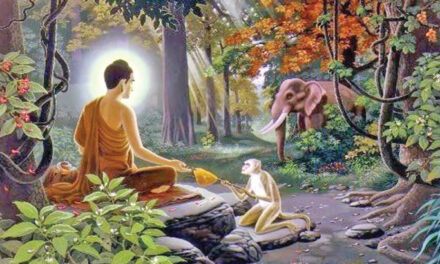
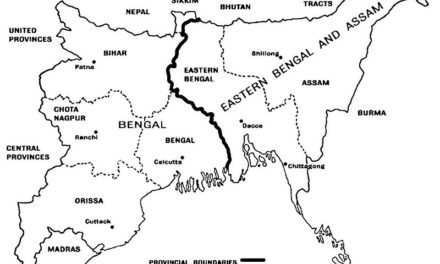


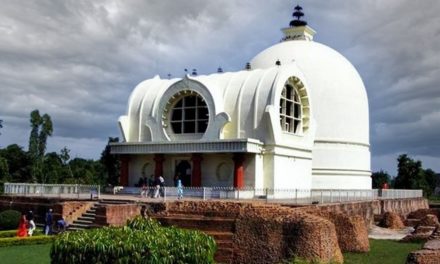
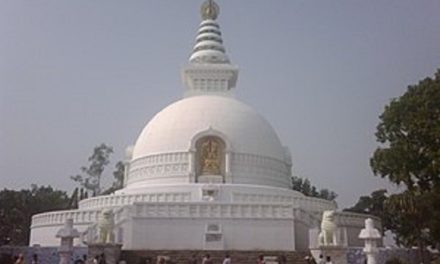
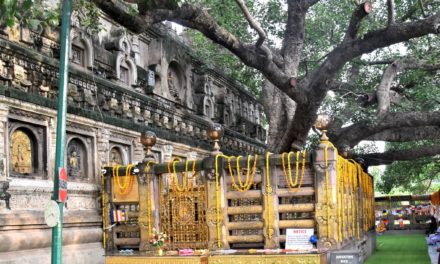

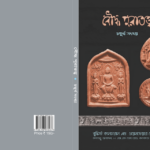

![Monuments of Mahabodhi [Mahavihara] Temple Complex Bodhgaya](https://baruasamaj.ezdivi.com/wp-content/uploads/sites/5/2023/10/Monuments-Book-Title-150x150.png)
